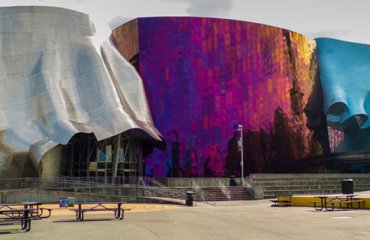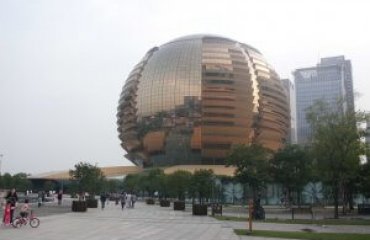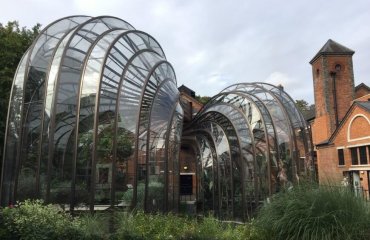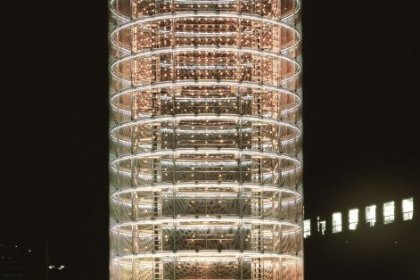
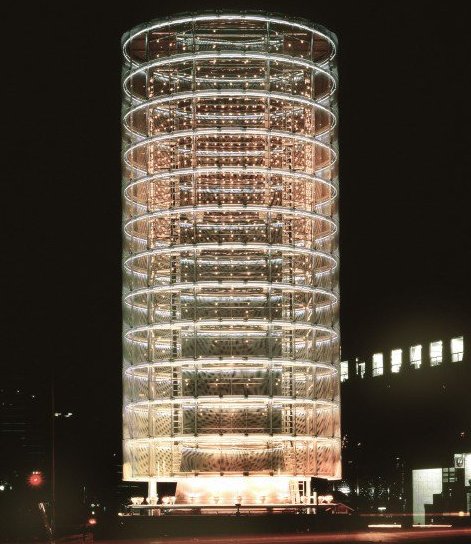
Tower of Winds by Forgemind ArchiMedia licensed under the terms of CC BY 2.0
A picture doesn’t truly do this structure justice. While the tower merely reflects the rest of the city during the daytime, by night it’s a different story.
Computers within the building sense the ambient wind and noise levels, then adjust its 1300 lamps, 12 neon rings and 30 floodlights to match. The result is a spectacular display of ever-changing light and color.
This piece of artwork, designed architect Toyo Ito in 1986, also serves a practical purpose. The Tower of Winds, which sits directly above an underground mall, houses water tanks as part of the mall’s air conditioning system.
It’s both a useful piece of infrastructure and a memorable landmark unlike anything else in the world.
Check out my posts on the Nakagin Capsule Tower and Whimsical Houses by Terunobu Fujimori to see more of Japan’s unique architecture.

